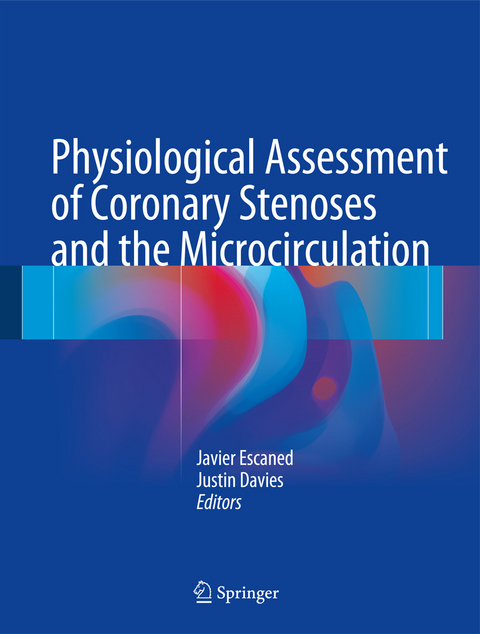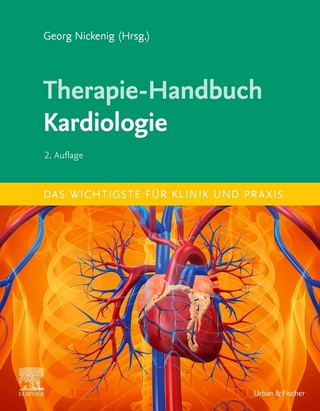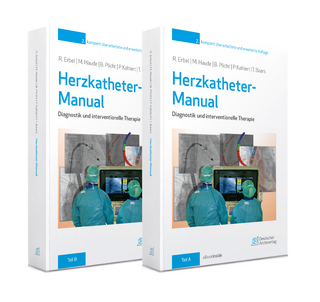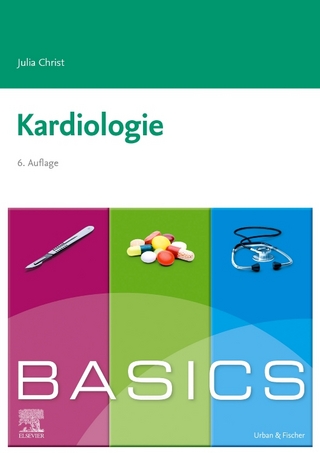
Physiological Assessment of Coronary Stenoses and the Microcirculation
Springer London Ltd (Verlag)
978-1-4471-5244-6 (ISBN)
Javier Escaned MD PhD FESC is Head of Section (Interventional Cardiology) at Hospital Clinico San Carlos, and Associate Professor of Medicine at Complutense University (Madrid, Spain). He trained as a cardiologist the United Kingdom (Queen Elizabeth University Hospital, Birmingham and Walsgrave Hospital, Coventry) before moving to the Thoraxcenter / Rotterdam (The Netherlands), where he obtained his PhD degree in 1994. He is author of more than 250 scientific articles, books and book chapters on different aspects of interventional cardiology, imaging and physiology. He is co-editor with Patrick Serruys of the textbook “Coronary Stenosis. Imaging, Structure and Physiology”, whose new edition was launched in May 2015. Current positions in scientific societies include: board member (treasurer) of European Association of Percutaneous Cardiovascular Interventions (EAPCI), nucleus member of the ESC Working Group on Pathophysiology and Microcirculation, and co-director of EuroPCR. In 2014 he served as director of the ESC International Summit on Coronary Microcirculation and Heart Disease. Recent or on-going international multicentre trials in which he has a principal investigator role include: ADVISE II, SYNTAX II, PILOT SECRET, SHEAR STENT and DEFINE-FLAIR. Some of his additional interests are philosophy, education and music.
FOREWORD.- INTRODUCTION.- Part 1. The Coronary Circulation in Health and Disease.- STRUCTURE AND PHYSIOLOGY OF THE CORONARY CIRCULATION.- A historical perspective on coronary circulation.- The anatomy of epicardial ,coronary arteries and veins.- The structure of transmural vessels and coronary microcirculation.- Regulation of coronary blood flow.- Myocardial metabolism and blood supply.- Coronary capacitance and the myocardial pump model.- Extravascular compression and vascular waterfalls.- Extrinsic neural control of blood flow.- Hemodynamic effects of epicardial stenoses.- Modification of shear stress by stenoses.- Phasic characteristics in coronary blood flow.- PATHOLOGICAL CHANGES IN CORONARY CIRCULATION.- Epicardial coronary stenosis.- Microvascular remodelling.- Microvascular obstruction.- Extravascular compression of the microcirculation.- Endothelial dysfunction.- Collateral development.- EFFECT OF SPECIFIC PATHOLOGIES ON EPICARDIAL VESSELS AND THE MICROCIRCULATION.- Hypertension and left ventricular hypertrophy.- Diabetes.- Dyslipidemia.- Atherosclerosis. Acute coronary syndromes.- Atherosclerosis. Chronic ischemia.- Acute and chronic effects of percutaneous coronary interventions.- Valvular heart disease.- Part II. Invasive Assessment of the Coronary Circulation in the Catheterization Laboratory.- FRACTIONAL FLOW RESERVE (FFR).- Understanding fractional flow reserve.- Current evidence on FFR as a clinical tool.- Application of fractional flow reserve to specific stenosis subsets.- INSTANTANEOUS WAVE FREE RATIO (iFR).- Physiological principles of iFR.- Validation of iFR. Clinical registries.- Application of iFR in clinical scenarios.- CORONARY FLOW RESERVE.- Understanding coronary flow reserve.- Use of Doppler-tipped guidewires to calculate coronary flow reserve.- Relative and adjusted coronary flow reserve.- Use of the thermodilution principle to calculate coronary flow reserve.- INDICES OF CORONARY RESISTANCE.- Understanding indices of coronary resistance.- Stenosis resistance estimated from pressure-flow relationships.- Myocardial resistance estimated with thermodilution and pressure.- Microcirculatory resistance calculated from intracoronary pressure and Doppler.- Integration of pressure and flow indices of coronary stenosis severity.- WAVE INTENSITY ANALYSIS.- Understanding wave intensity analysis.- Wave patterns in coronary flow in health and disease.- Changes in WIA coronary patterns during trans-arterial valve implantation.- ASSESSMENT OF ENDOTHELIAL DYSFUNCTION.- Understanding endothelial modulation of vascular tone.- Assessment of endothelial dysfunction with acetylcholine challenge.- Other methods to assess endothelial dysfunction.- RESEARCH MODELS.- Relevant differences between coronary circulation in human and experimental animal models.- Computerised fluid dynamics applied to modelling of coronary circulation.
| Erscheint lt. Verlag | 29.8.2017 |
|---|---|
| Zusatzinfo | 131 Illustrations, color; 27 Illustrations, black and white; XIII, 313 p. 158 illus., 131 illus. in color. |
| Verlagsort | England |
| Sprache | englisch |
| Maße | 210 x 279 mm |
| Themenwelt | Medizinische Fachgebiete ► Innere Medizin ► Kardiologie / Angiologie |
| Medizinische Fachgebiete ► Radiologie / Bildgebende Verfahren ► Radiologie | |
| Schlagworte | Coronary Angiography • Coronary Circulation • Fractional Flow Reserve • Intracoronary Imaging • microcirculation • Stenosis |
| ISBN-10 | 1-4471-5244-1 / 1447152441 |
| ISBN-13 | 978-1-4471-5244-6 / 9781447152446 |
| Zustand | Neuware |
| Informationen gemäß Produktsicherheitsverordnung (GPSR) | |
| Haben Sie eine Frage zum Produkt? |
aus dem Bereich


